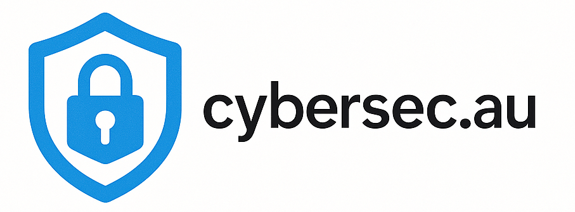For Australian CFOs, cybersecurity represents one of the most challenging investment decisions: how do you measure the ROI of something designed to prevent events that may never happen? The answer lies in reframing cybersecurity from a cost center to a value driver that enables business growth, reduces operational risk, and creates competitive advantage.
💰 CFO Reality Check
"The average cost of a data breach in Australia is $3.35 million, but the average annual cybersecurity budget is only $180,000. We're spending 18 cents to protect every dollar at risk—that's not risk management, that's gambling."
The Traditional ROI Problem
Traditional ROI calculations fail for cybersecurity because they focus on cost avoidance rather than value creation. This creates a fundamental disconnect between finance and security teams, leading to chronic underinvestment and misaligned priorities.
Why Traditional Metrics Fall Short
- Negative ROI bias: Measuring only what doesn't happen
- Unmeasurable benefits: Reputation and trust are hard to quantify
- Long-term value: Benefits accrue over years, not quarters
- Opportunity cost blindness: Missing business opportunities due to security concerns
A New Framework: Cybersecurity Value Realization
Value Driver 1: Revenue Enablement
Quantify how cybersecurity enables revenue generation:
- Faster deal closure: Security certifications accelerate B2B sales cycles
- Premium pricing: Security-conscious customers pay more for trusted providers
- Market expansion: Compliance enables entry into regulated industries
- Partnership velocity: Strong security posture speeds due diligence
📊 Revenue Enablement ROI Example
Scenario: Professional services firm investing in ISO 27001 certification
- Investment: $150,000 (certification + security improvements)
- Result: Won 3 additional enterprise contracts worth $2.1M annually
- ROI: 1,400% in first year
Value Driver 2: Operational Efficiency
Modern cybersecurity tools often improve operational efficiency:
- Automation savings: Reduced manual security tasks
- Incident reduction: Fewer disruptions and recovery costs
- Compliance automation: Reduced audit and compliance costs
- Insurance optimization: Lower premiums for better security posture
Value Driver 3: Risk Mitigation
Quantify risk reduction in financial terms:
- Breach cost avoidance: Probability-adjusted loss prevention
- Business continuity: Reduced downtime and recovery costs
- Regulatory compliance: Avoided fines and penalties
- Reputation protection: Maintained customer trust and loyalty
Financial Modeling for Cybersecurity Investments
The Cybersecurity Investment Model
A comprehensive approach to cybersecurity financial analysis:
🔢 Investment Components
Direct Costs
- Technology licensing and subscriptions
- Professional services and implementation
- Internal staff time and training
- Infrastructure and hardware
Quantifiable Benefits
- Revenue enablement and acceleration
- Operational cost savings
- Insurance premium reductions
- Avoided breach and incident costs
Strategic Value
- Competitive differentiation
- Market expansion opportunities
- Customer trust and retention
- Regulatory positioning
Risk-Adjusted ROI Calculation
Factor probability and impact into your calculations:
Cybersecurity ROI Formula
ROI = (Revenue Enablement + Cost Savings + Risk Mitigation - Investment Costs) / Investment Costs × 100
Where:
- Revenue Enablement: Additional revenue from security-enabled opportunities
- Cost Savings: Operational efficiencies and automation benefits
- Risk Mitigation: (Probability of Incident × Cost of Incident) × Risk Reduction %
- Investment Costs: Total cost of cybersecurity implementation
Building the Business Case
Stakeholder-Specific Value Propositions
For the CEO
- Strategic enablement: How security supports business strategy
- Competitive advantage: Security as market differentiator
- Risk management: Protection of business value and reputation
- Growth facilitation: Security enabling new business models
For the Board
- Fiduciary responsibility: Protecting shareholder value
- Regulatory compliance: Meeting governance obligations
- Crisis preparedness: Readiness for cyber incidents
- Long-term sustainability: Building resilient business operations
For Operations Teams
- Business continuity: Maintaining operational stability
- Efficiency gains: Automation and process improvements
- Risk reduction: Fewer disruptions and incidents
- Capability enhancement: Better tools and processes
Measuring Cybersecurity Performance
Financial KPIs
Track metrics that matter to the CFO:
- Security-enabled revenue: Revenue from security-dependent business lines
- Cost per incident: Total cost of security incidents
- Security efficiency ratio: Security costs as percentage of revenue
- Insurance cost trends: Cyber insurance premium changes
Operational KPIs
Operational metrics with financial implications:
- Mean time to detection (MTTD): Speed of threat identification
- Mean time to response (MTTR): Incident response efficiency
- Automation rate: Percentage of security processes automated
- Compliance score: Adherence to regulatory requirements
Strategic KPIs
Long-term value indicators:
- Customer trust index: Customer confidence in your security
- Security maturity score: Overall security capability assessment
- Vendor confidence rating: Partner and supplier trust levels
- Market positioning: Security reputation relative to competitors
Budget Planning and Allocation
The 3-Tier Investment Strategy
Tier 1: Foundation Security (40% of budget)
- Basic endpoint protection and email security
- Multi-factor authentication and access controls
- Regular backups and basic incident response
- Employee security awareness training
Tier 2: Advanced Protection (35% of budget)
- Endpoint detection and response capabilities
- 24/7 security monitoring and SOC services
- Advanced threat protection and intelligence
- Vulnerability management and penetration testing
Tier 3: Strategic Enablement (25% of budget)
- Zero Trust architecture implementation
- Security automation and orchestration
- Advanced analytics and threat hunting
- Innovation and emerging technology pilots
Working with Cybersecurity Investment Partners
Many Australian CFOs are partnering with cybersecurity specialists to optimize their security investments. Leading providers like Affinity MSP offer CFO-focused services including:
- Cybersecurity investment analysis and ROI modeling
- Budget optimization and cost-benefit analysis
- Financial risk assessment and quantification
- Performance measurement and KPI development
- Strategic planning and roadmap development
The Bottom Line for CFOs
Cybersecurity is not a cost to be minimized—it's an investment to be optimized. The CFOs who understand this distinction will build more resilient, profitable, and competitive organizations.
The key is moving beyond traditional cost-benefit analysis to value-based investment frameworks that capture the full spectrum of cybersecurity's business impact.
Optimize Your Cybersecurity Investment
Transform your approach to cybersecurity budgeting with expert financial analysis and ROI modeling. Get CFO-focused cybersecurity consultation from Australia's specialists.
Schedule CFO Consultation